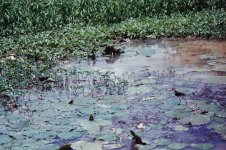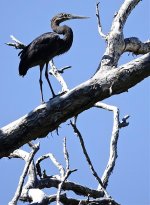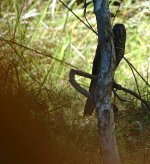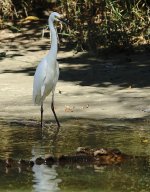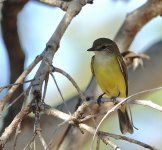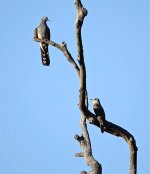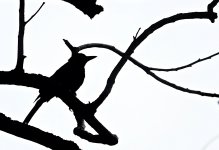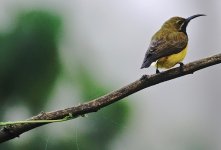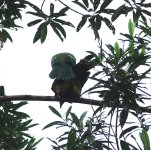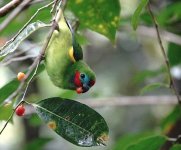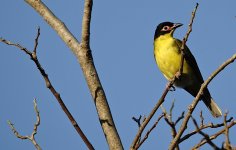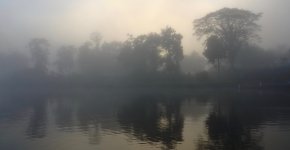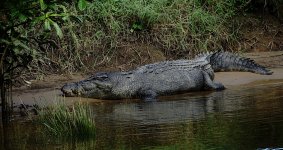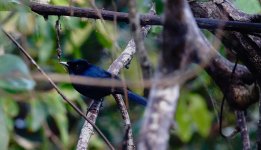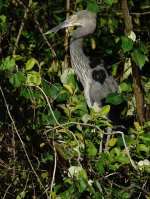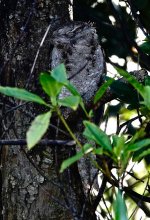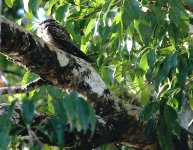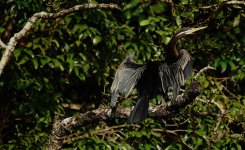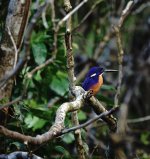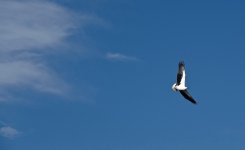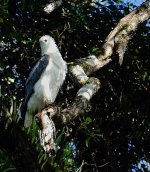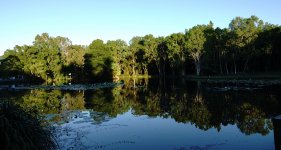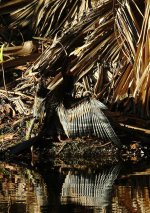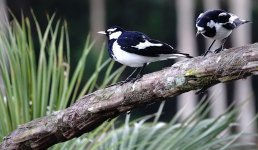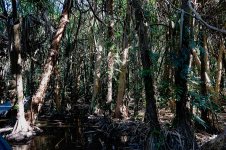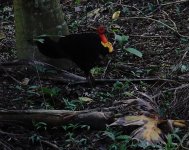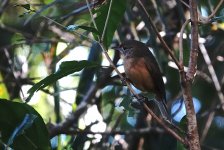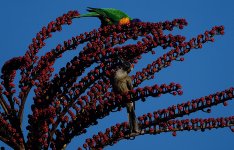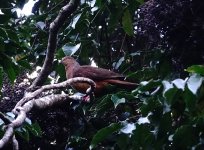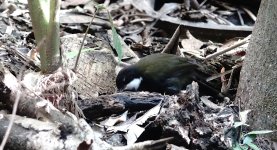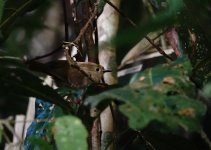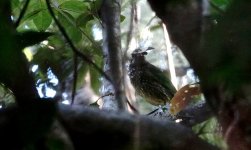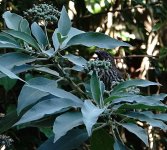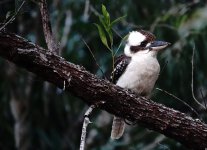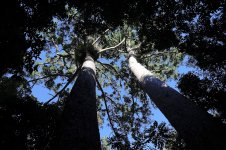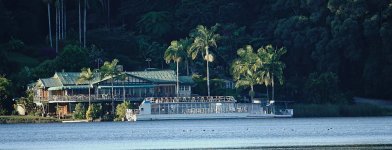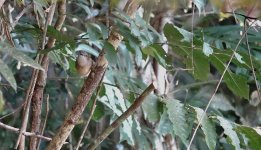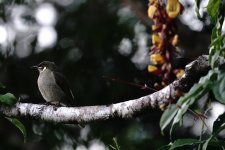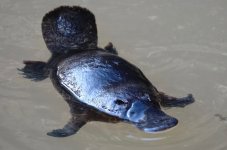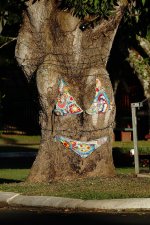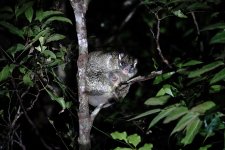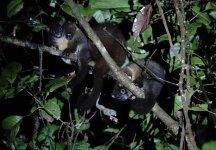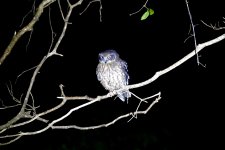MKinHK
Mike Kilburn

The big highlight for me here however was a male Comb-crested Jacana with a solitary youngster. They were not at all afraid of the boat and we enjoyed wonderful views as they picked their way over the floating vegetation and the youngster briefly stopped for a quick hug, hiding under its parent’s wing with its feet sticking ridiculously out the below.
As we were walking back from the jetty a rather chunky dark brown bird flew over my head and landed briefly in a roadside tree, stopped for a frustratingly short few seconds and then ghosted away – a wholly unexpected Rufous Owl! This was not our last bird of the day – during the 80km drive back to to the Aurora Lodge we flushed three unidentified nightjars from the surface of the road. Any insight into what species is the most likely here would be greatly appreciated.
As we were walking back from the jetty a rather chunky dark brown bird flew over my head and landed briefly in a roadside tree, stopped for a frustratingly short few seconds and then ghosted away – a wholly unexpected Rufous Owl! This was not our last bird of the day – during the 80km drive back to to the Aurora Lodge we flushed three unidentified nightjars from the surface of the road. Any insight into what species is the most likely here would be greatly appreciated.
Attachments
-
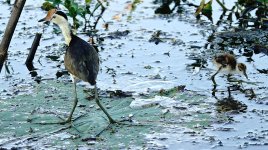 DSC05982 Comb-crested Jacana @ Kakadu.jpg1.7 MB · Views: 14
DSC05982 Comb-crested Jacana @ Kakadu.jpg1.7 MB · Views: 14 -
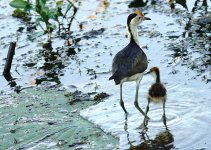 DSC05979 Comb-crested Jacana @ Kakadu.jpg1.7 MB · Views: 11
DSC05979 Comb-crested Jacana @ Kakadu.jpg1.7 MB · Views: 11 -
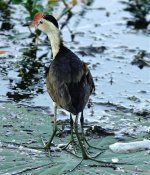 DSC05991 Comb-crested Jacana @ Kakadu.jpg216.6 KB · Views: 23
DSC05991 Comb-crested Jacana @ Kakadu.jpg216.6 KB · Views: 23 -
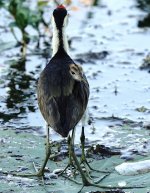 DSC05988 Comb-crested Jacana @ Kakadu.jpg242.4 KB · Views: 16
DSC05988 Comb-crested Jacana @ Kakadu.jpg242.4 KB · Views: 16 -
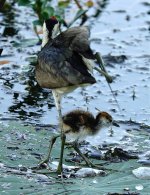 DSC05992 Comb-crested Jacana @ Kakadu.jpg205 KB · Views: 17
DSC05992 Comb-crested Jacana @ Kakadu.jpg205 KB · Views: 17





